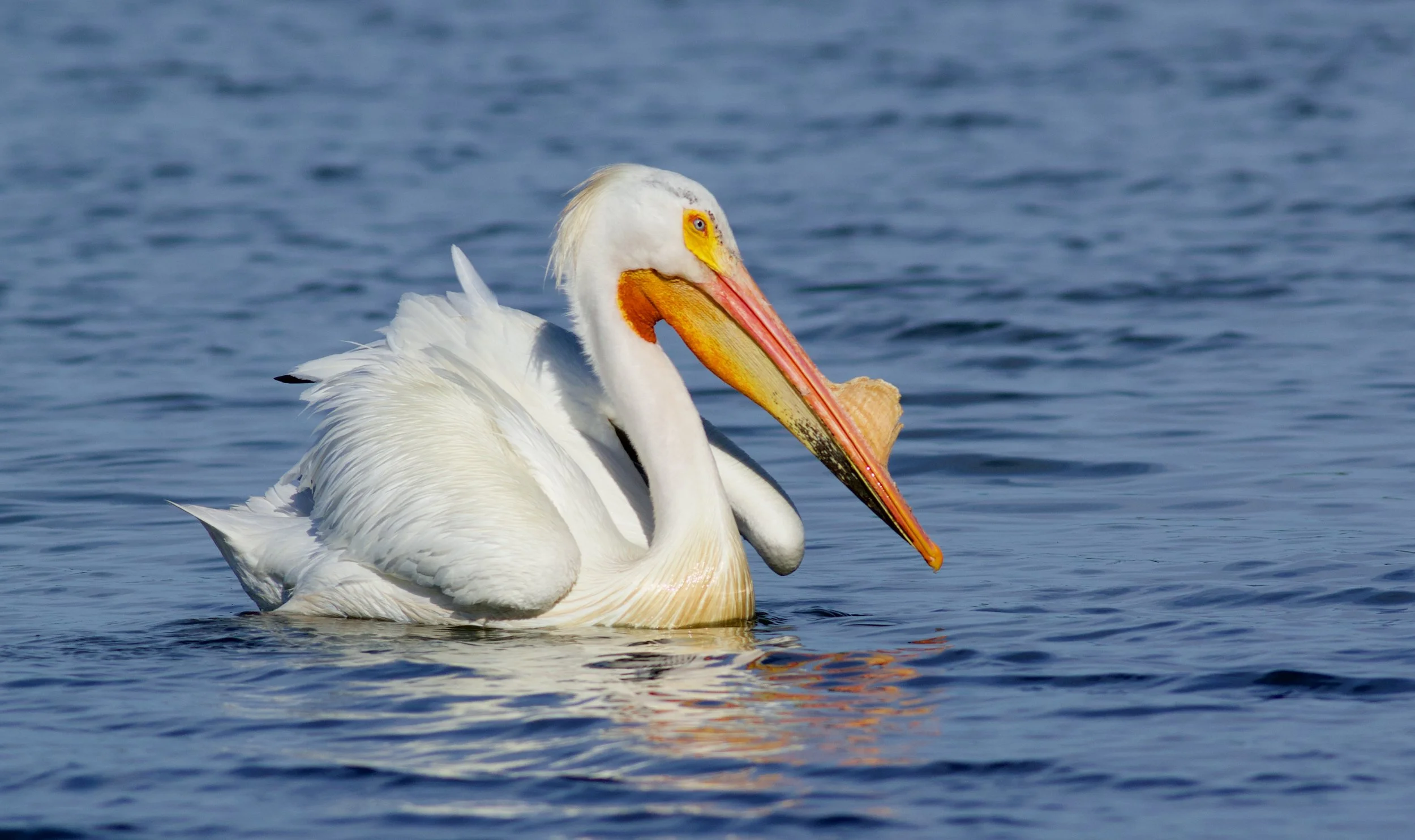At Faville Grove Sanctuary, American White Pelicans announce their return from southern coastal waters in large flashes of white above the Crawfish River. During a prescribed burn on March 21, we noticed a flock of around 50 riding a thermal high above the river. Local eBirders report seeing them as early as March 15 this year. We look forward to more arrivals and a summer spent fishing, flocking, and floating on water and wing.
A pelican joins a flock stationed on a shallow island (photo by Arlene Koziol).
Displaying impressive grace in flight for a bird with an up to nine-foot wingspan, pelicans often seem to disappear high in the air as they turn and circle the sky, offering little more than flashes of white in unison against the sun. However, large nesting colonies are difficult to miss, taking over freshwater islands in lakes, rivers, and wetlands across the state. They’ll feed many miles away from their nesting grounds, and it’s likely that most of the pelicans we see at the sanctuary have mosied over from Horicon Marsh, which hosts thousands of breeding pairs annually.
Male and female American White Pelicans grow a "keel" on top of their bills in spring that they shed by the end of the breeding season (photo by Arlene Koziol).
The eight living species that comprise the family Pelecanidae occupy a global distribution, but the American White Pelican has experienced significant population decline and subsequent recovery within North America. Historically common throughout the Upper Mississippi River Valley, their populations suffered throughout the nineteenth and twentieth centuries due to negative pressures like habitat conversion and usage of DDT. During this time, their breeding range was squeezed into just North Dakota and parts of southern Canada, with populations migrating to Central American waters in winter. Over the course of the 1980s and early 90s, visiting pelicans were observed in rapidly increasing numbers at Horicon Marsh and the islands of Green Bay, while the first breeding pair in the state was observed in the mid 90s. In a WPR interview a few years ago, Wildlife Biologist Stacie O’Dell notes that around this time, “there was a mysterious abandonment of a large nesting colony of over 30,000 nesting birds” in Chase Lake National Wildlife Refuge in North Dakota, perhaps explaining the sudden establishment of the species within Wisconsin and elsewhere east of the Mississippi. Possibly pushed east by seasonal drought, nesting populations have increased to numbers in the many thousands in our state. This expansion was matched elsewhere in their historical range, marking a tremendous rebound in the wake of higher waterfowl protections and pesticide regulations.
It makes perfect sense that the American White Pelican would feel right at home in Wisconsin, with its expansive and diverse freshwater systems. I’m glad they’ve gotten the chance to give the state another try, and their increasing presence gives only more reason to protect and enhance the important natural habitats they depend on—here, there, and everywhere.
Written by Tucker Sanborn, Faville Grove Sanctuary land steward
Cover photo by Andy Reago & Chrissy McClarren. A large flock of American White Pelicans circle overhead.







